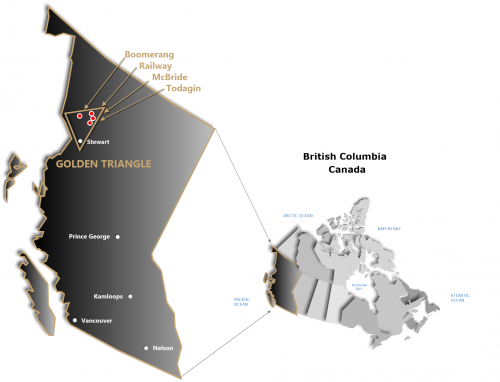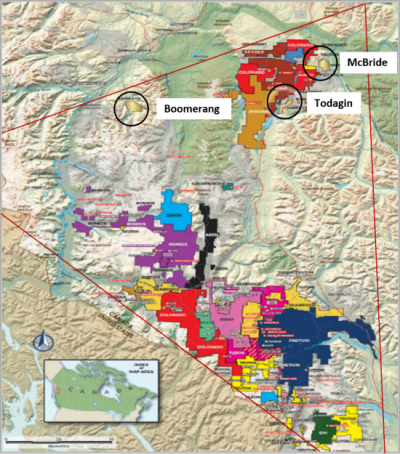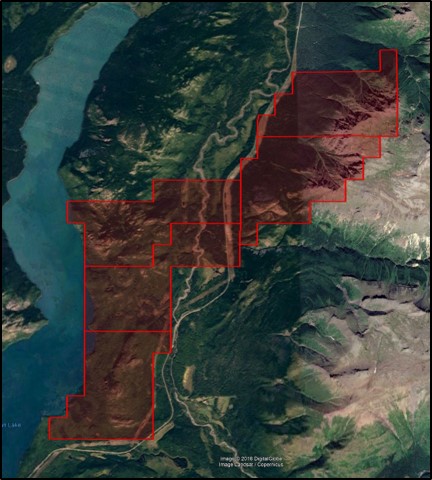In June of 2022 Hawkeye closed upon the sale of its Todagin property (“Property) which included the sale of its McBride, Railway and Boomerang properties to Newcrest Red Chris Mining Ltd. (“Newcrest”), a wholly-owned subsidiary of Newcrest Mining Limited (Australian Stock Exchange: NCM, Toronto Stock Exchange: NCM, Papua New Guinea Exchange: NCM), for total consideration of CAD$1,400,000 for all four properties. Under terms of the Asset Purchase Agreement Hawkeye will retain a 2% Net Smelter Royalty (NSR) on the Todagin property which is subject to buy-down provisions. For details on these provisions please click on the ROYALTIES link above.
The Todagin Project
The Todagin Project is situated in the northeastern corner of the Golden Triangle and positioned approximately 18 kilometres southwest of the Red Chris Cu-Au mine, 15 kilometres southwest of the North Rok occurrence, and 16 kilometres south of the Saddle discovery of Newmont (GT Gold). The Todagin claims are also located contiguous with the Red Chris Mine property and only 12 kilometres east of the Skeena Resources’ GJ project.
Similar to the property of Newmont (GT Gold), the principal geological units in the region comprise the Hazelton Group and underlying Stuhini Group with precious and base metal mineralization commonly associated with structural controls within and adjacent to intrusions.
The Jurassic-age Hazelton basalt, andesite, dacite and rhyolite flows and pyroclastics unconformably overlie Triassic Stuhini volcanics and volcanoclastic deposits. Both Stuhini and Hazelton lithologies are overlain to the south by Upper Jurassic Bowser subaerial to deep marine sediments. Monzonite, diorite to gabbro intrusions of Triassic to Late Jurassic age intrude the above packages. Carbonate, limonite, sericite, clay and silica alteration affect the volcanic lithologies.
Previous fieldwork in the area included regional mapping and drainage geochemical surveys by government, and reconnaissance soil, stream silt and rock sampling programs by exploration companies focused on district scale Cu-Au porphyry targets. The results identified anomalous base and precious metals associated with weakly developed argillic, phyllic and propylitic alteration envelopes.




